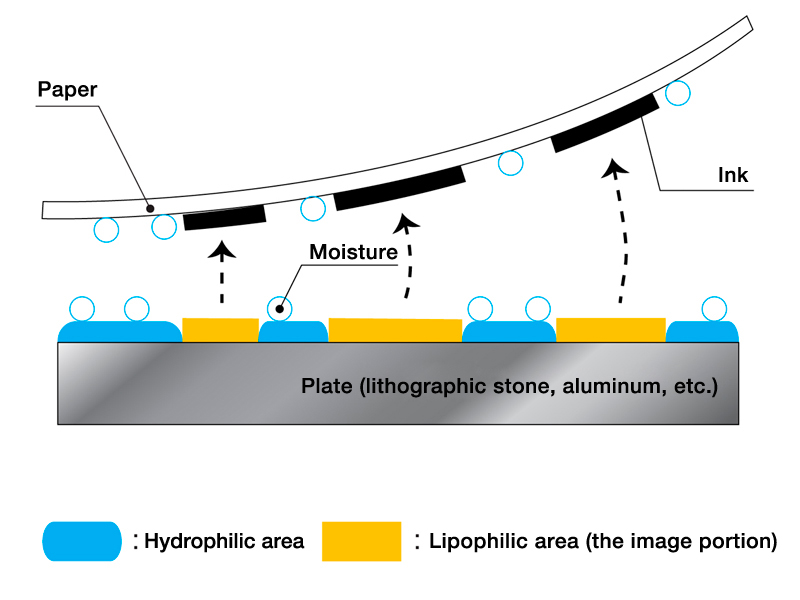Planography
平版
Heihan
CATEGORIES
Planography is a format of print work that uses plates with flat, even surfaces. One example of planography is lithography, in which an artist paints directly on a stone or metal plate with a smooth surface and then take advantage of the mutual repulsion of oil and water to form a printable image.
The four kinds of print formats are letterpress (relief), intaglio, planography, and stencil. Unlike other print formats, planography does not involve actually changing the physical properties of the plate by engraving, etching, or making holes; as the name implies, the surface is a “plane”—flat and even. To make a print, a planography artist starts by painting on the plate with a litho crayon, tusche (“La Vie”), or a similar material containing oil and/or fat. After performing the chemical printmaking treatment, the artist then proceeds to the final printing. Thus, one of the unique characteristics of planography is that it lets the artist produce a print of the exact image he or she made during the very first step of the process; the initial image stays the same throughout. Spurred by the invention of lithography by German author Alois Senefelder in around 1798, planography gradually developed into forms of printing like “collotype,” which uses glass to create slight gradations, and offset printing, which now serves as the basis for most printed materials.
The principles and processes behind planographic printing are as follows. Working with a wet plate surface, the printer performs the printmaking process to create two types of areas on the plate surface that are fundamentally and chemically opposite: hydrophilic areas that retain water and lipophilic areas that repel water and attract oil. The artist then applies oil-based ink to this surface with a roller. The hydrophilic areas repel the ink, while the lipophilic areas accept it. With the lipophilic areas loaded with ink, the printer places paper over the plate and runs the plate through a special press to apply pressure and thereby transfer the image from the plate to the paper. In offset printing, the printer first transfers an inked plate to a rubber roller (a “rubber blanket”) and then rolls the rubber blanket over paper to print the image.
- A plate filled with ink

- Transferred ink

